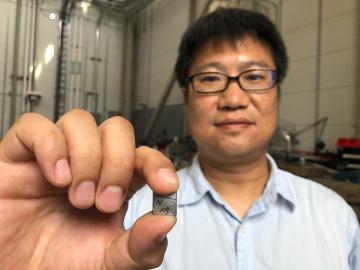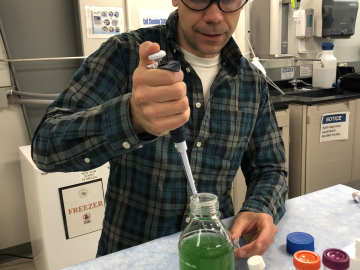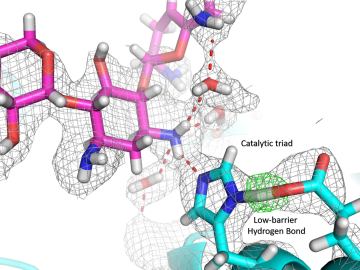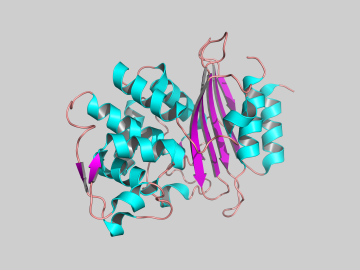Filter News
Area of Research
News Type
News Topics
Media Contacts
![2018-P07635 BL-6 user - Univ of Guelph-6004R_sm[2].jpg 2018-P07635 BL-6 user - Univ of Guelph-6004R_sm[2].jpg](/sites/default/files/styles/list_page_thumbnail/public/2018-P07635%20BL-6%20user%20-%20Univ%20of%20Guelph-6004R_sm%5B2%5D.jpg?itok=DUdZNt_q)
A team of scientists, led by University of Guelph professor John Dutcher, are using neutrons at ORNL’s Spallation Neutron Source to unlock the secrets of natural nanoparticles that could be used to improve medicines.

Scientists from AK Steel Corporation are using neutrons at Oak Ridge National Laboratory’s Spallation Neutron Source to discover how different manufacturing processes will affect the performance of the company’s new AHSS, or advanced high strength steel, called NEXMET® 1000.

Scientists at Oak Ridge National Laboratory are using neutrons to understand why certain hydrocarbons produced by blue-green algae are important to their biology, so new strains can be engineered to sustainably produce biofuels. Neutron scattering makes it possible to non-destructively see inside living algae at real world temperatures and in real time.

An Oak Ridge National Laboratory-led team has observed how a prolific class of antibiotics may be losing its effectiveness as certain bacteria develop drug resistance by acquiring enzymes known as aminoglycoside modifying enzymes. Aminoglycosides are commonly used in antibiotics to tre...

New insights into certain catalytic enzymes formed by bacteria to break down antibiotics may lead to the design of drugs better equipped to combat resistant bacteria. Scientists at Oak Ridge National Laboratory used neutron crystallography at the lab’s Spallation Neutron Source to st...

To improve models for drilling, hydraulic fracturing and underground storage of carbon dioxide, Oak Ridge National Laboratory scientists used neutrons to understand how water flows through fractured rock.

A novel approach for studying magnetic behavior in a material called alpha-ruthenium trichloride may have implications for quantum computing. By suppressing the material’s magnetic order, scientists from Oak Ridge National Laboratory and the University of Tennessee observed be...




